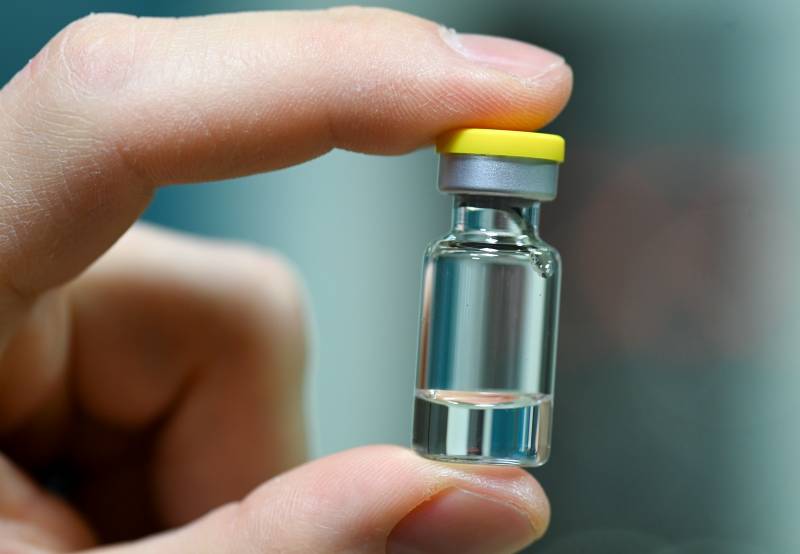The coronavirus continues to run rampant throughout California. As of Wednesday, the surge of cases has led to a daily average of 13,349 people testing positive for COVID-19 over the last seven days, more than double the number two weeks ago. Health officials now fear hospitals will become overwhelmed as travel during the holidays and more time spent indoors socializing could result in an explosion of even more infections.
COVID-19 Vaccine Plans in California: What We Know So Far

While this is obviously not the time to get lax on pandemic protocols like wearing a mask, the situation has reinforced the notion that only an effective vaccine will bring the disaster under control.
To that end, Pfizer and Moderna each recently announced extremely hopeful results for the vaccines they have developed. Both appear to protect against coronavirus infection 95% of the time. AstraZeneca also reported promising data related to its vaccine this week, though the methodology behind those results has come into question. These leading candidates are among a group of six vaccines nearing the latest stages of testing, mostly phase three trials. Pfizer recently submitted an application for emergency use authorization to federal regulators. The other biotechnology companies are likely to soon request the same.
If all goes smoothly, some Americans could receive inoculation against the coronavirus by the second week of December, according to Moncef Slaoui, the chief scientific adviser for Operation Warp Speed, the federal government’s program to bring a COVID-19 vaccine to market.
Dr. Erica Pan, acting head of the California Department of Public Health, says any vaccine won’t be an immediate panacea. “We hope to get some by the end of the year, but it's going to trickle in at first,” she said. “It's a wonderful light at the end of the tunnel. But it's not like all the vaccines are going to show up right away.”
In mid-October, California released a working draft outlining vaccine distribution in three phases, drawing on lessons learned from current delivery systems that have been implemented for seasonal influenza and past epidemics like H1NI.
Three Phases: Who Qualifies When
Pan says California is on tap to receive between 1-2 million initial doses of a vaccination, all of which will be allocated for health care workers with likely exposure to COVID-19. As more supplies arrive, a broader array of providers will qualify, and they will be prioritized according to their level of occupational vulnerability. For example, personnel in skilled nursing facilities who work in residential care will take precedence over those in outpatient settings. Those at increased risk for severe COVID-19, like older adults with underlying health conditions, will also be included at this stage. The final group in phase one are essential workers, with specific job categories to be defined in future drafts of the plan.
As the number of doses available continues to ramp up, phase two will focus on protecting health care workers like primary care providers and doctors in outpatient clinics who are not exclusively treating COVID-19. A wider net of essential workers and vulnerable populations such as people with disabilities or those living in correctional facilities will qualify as well.
Officials say the order of vaccine recipients will also take into consideration health disparities related to race, income and access to health care, to ensure groups who have been hit hardest by the virus are protected earliest.
When manufacturers produce enough doses for the general public, the third phase will unfold, and a broad marketing campaign will encourage the general public to get vaccinated as soon as possible.
Individual counties are expected to submit distribution plans to the state by Dec. 1, which will be made available to the public soon after. The filings will provide more details about how the rollout will proceed in each jurisdiction.
“It'll take us several months before we get more and more vaccine, and before we have enough of the population vaccinated to really be able to truly let our guard down,” Pan said.
Here are some other questions and answers concerning California vaccine distribution:
Why should I get a shot? The answer to that is simple: Currently there is no cure for COVID-19, and treatment options are limited. The disease has killed nearly 19,000 Californians and at least 1.4 million people around the world. Experts say the vaccine is our best tool to end the pandemic.
How many shots do I have to get? The three most promising vaccines, from Pfizer, Moderna and AstaZeneca, are comprised of two doses spaced at least a month apart.
When can I get a shot? Health officials expect the vaccine will be widely available by late spring or early summer. Current estimates assume the early data from Moderna, Pfizer and AstraZeneca trials holds up in coming months. It may be awhile before a vaccine is available for young children, as more research is needed.
Will it be expensive? “The state will ensure the cost of the vaccination will in no way get in the way of someone’s decision to get vaccinated,” said Dr. Mark Ghaly, California’s secretary of health and human services. For those uninsured, the shots would be fully covered, he said.
Where can I get a shot? Distribution is an immense logistical puzzle that is still in process. The vaccines furthest along to getting approved require unique storage and handling requirements. For example, Pfizer’s vaccine must be shipped at -94°F, a temperature significantly below current standards for vaccines. Mobile clinics and commercial pharmacies will likely make up the initial distribution points. Eventually, doctors’ offices, hospitals, and federally qualified health centers will be brought into the mix.
For more information, check out the Centers for Disease Control and Prevention's Facts About COVID-19 Vaccines.
